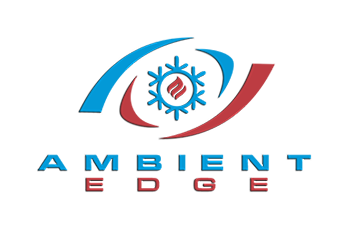
When we say VRF, we mean variable refrigerant flow. There are other systems out there that use the same acronym, so if you’re looking for information about how those work, you’re in the wrong place. If you’re looking for information on the high-tech VRF heating, cooling, and ventilation (HVAC) systems and whether such a system might be a good solution for your commercial facility, then keep reading.
If you already know about VRF HVAC systems and want to get a quote, call Ambient Edge at 833-226-8006
This article will focus on commercial applications for a VRF HVAC system. While it is possible to install one in a very large home, there are generally better solutions for residential HVAC needs. According to the General Services Administration (GSA), a VRF system is most cost-effective in buildings between 10,000 and 80,000 sq. ft.
There are also mini-VRF systems available for smaller business spaces as well as large custom homes.
VRF HVAC Technology
VRF HVAC systems are the system of choice for commercial applications in Japan, China, Europe, and other parts of the world. They are becoming more common in the United States, as more decision-makers learn about them. VRF technology is particularly appropriate to make upgrades to existing buildings that use excessive energy or need extensive HVAC repairs.
A VRF HVAC system is a type of split system with an outdoor compressor unit and multiple indoor fan coil units. The compressor unit is usually installed as a rooftop unit and heats and cools refrigerant that flows through piping in one single circuit to all of the fan coils located throughout the building. There is no need for a large system of air ducts as are required for a standard HVAC system. The VRF system can heat and cool separate zones at the same time.
More on the Compressor Unit
The compressor unit recovers heat generated in spaces during the cooling process and uses it to heat other spaces, and recovers cooled air to use in the heating process. The compressor is designed to provide refrigerant at a variable rate. The official name for this technology is variable refrigerant flow (VRF). It generally operates much more efficiently than conventional HVAC compressors of a similar size.
More on the Fan Coils
The fan coils configurations can be customized to your space and needs. We can mount them at floor level, in the walls, or in the ceiling. The fan coils condition the air and then recirculate it. You don’t need the ductwork of a central air system to heat and cool your indoor spaces. However, you may need a smaller system outdoors to provide outside air.
Outside Air Ventilation
A dedicated outdoor air system (or more than one) is used to provide ducted ventilation air directly to the space or indoor unit.
Control System
VRF HVAC systems include a sophisticated control system that is integrated with the compressor and fan coils. This includes the ability to self-diagnose issues, and the ability to communicate with other building automation systems.
For a more detailed look at how VRF technology works and the different types of systems, you may want to read an article from CSE Magazine.
Higher Initial Cost
The complexity of the VRF HVAC system results in a higher initial cost when compared to a comparable conventional HVAC system. The size of your building, your heating and cooling needs, and several other factors will determine your actual installation cost.
A rough estimate compiled by Washington State University indicates the installed cost of a VRF HVAC system is approximately $18 per sq. ft. served, while a conventional system that meets minimum codes would cost about $12 to $15 per sq. ft. served.
Cost Savings
The GSA reports that about 33% of commercial building energy usage is for heating, cooling, and ventilation. By installing a highly efficient VRF HVAC system, your facility would see immediate cost savings through lower utility bills. The exact savings would again depend upon your specific heating and cooling needs, and upon how old and inefficient the system you are replacing was.
This is one of the reasons a VRF HVAC system is especially well suited for older buildings with aging HVAC systems, or for installation in historic buildings that have never had air conditioning.
Get a Quote on a Multi VRF System for Your Project
If a multi VRF HVAC system sounds like a good fit for your HVAC replacement or new construction project, call Ambient Edge at 833-226-8006 and we’ll set up a consultation. Once we know the size and scope of your project, we’ll be able to provide you with an accurate quote. Our team will work with you to install the system that best suits your needs and budget.



